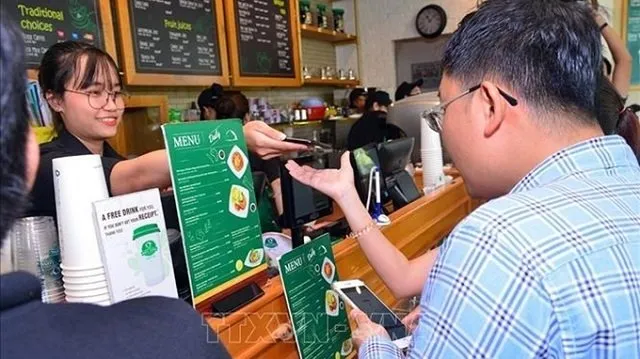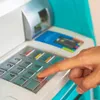Vietnam steps up measures urged to expand e-payments via mobile subscribers

According to the World Bank (WB), Vietnam currently has the lowest amount of non-cash transactions in the region, at only 4.9%, while the figure in Thailand is close to 60% and Malaysia 89%.
In addition, while people in the above countries mostly use card payment methods or bank accounts, only 59% of adults in Vietnam own bank accounts, not to mention 60% of the population in rural areas doesn’t have a bank account and face difficulties in accessing financial services.
In addition, the system of payment acceptance venues is mainly concentrated in urban areas, restaurants, hotels and large shops. Therefore, the current e-payment system in Vietnam only meets a part of the retail payment demand of urban residents. For rural areas, this service is almost non-existent.
In order to promote a non-cash habit among Vietnamese people, the Government and the State Bank have issued a series of mechanisms and policies to develop the e-payment and digital payment systems. A series of banks and payment intermediaries have also been established to provide this service to the people.
However, the digital payment infrastructure in Vietnam still faces problems that need to be solved. First of all, these systems have not yet been universalised to all parts of the country. Several financial institutions focus only on developing networks and drawing more customers in urban areas, targeting high-income people and bank accounts. Meanwhile, people in remote areas with low incomes and saving habits also need cheap and easily accessible financial services.
In addition, the "pure” Vietnamese payment system is still small and weak, combined with fragmented development in digital payment and commercial markets by Vietnamese enterprises somewhat lacking a strategic strategy. A large number of digital payment companies were born in the form of startups but due to a lack of financial resources, they had to call for investment from abroad. In 2017, there were about 20 large e-commerce enterprises operating in Vietnam, of which 17 were foreign-invested.
From international experience, an effective solution to widely deploy low-cost digital payment services is to use telecommunications network infrastructure. In fact, the use of mobile subscriber accounts for small value service consumption has been widely applied in Japan, Singapore and European countries, focusing on transactions such as payment on e-commerce sites, recharge of e-wallets and covering public transport service fees and parking fees. Even the rate of using mobile subscriber accounts for payment in many countries is five times higher than the use of bank accounts.
In Vietnam, the use of mobile accounts for payment has also been applied to multiple types of services, such as making donation in charity programmes, paying for digital content applications or, most recently, covering the cost in the pilot e-parking service, namely I-parking in Hanoi and My-parking in Ho Chi Minh City. The results of the pilot e-parking service payment show that the proportion of users with telecommunications accounts stands at 94%, compared to 6% of those using bank accounts.
Experts said that the use of mobile subscriber accounts for e-payments in Vietnam would create favourable conditions and opportunities to develop modern mobile payment products and services, contributing to promoting no-cash payment and better meeting the increasing demands of customers.
In particular, this method is suitable for the population groups in rural and remote areas, who have little access to traditional financial services. For that reason, if there are appropriate solutions to promote the expansion of e-payment through mobile subscribers, while promoting communications to raise public awareness and strengthen consumer confidence on this payment method, it would be an important contribution to creating a fundamental change in the public’s perception about e-payment and their current cash use habits.
Tags:





